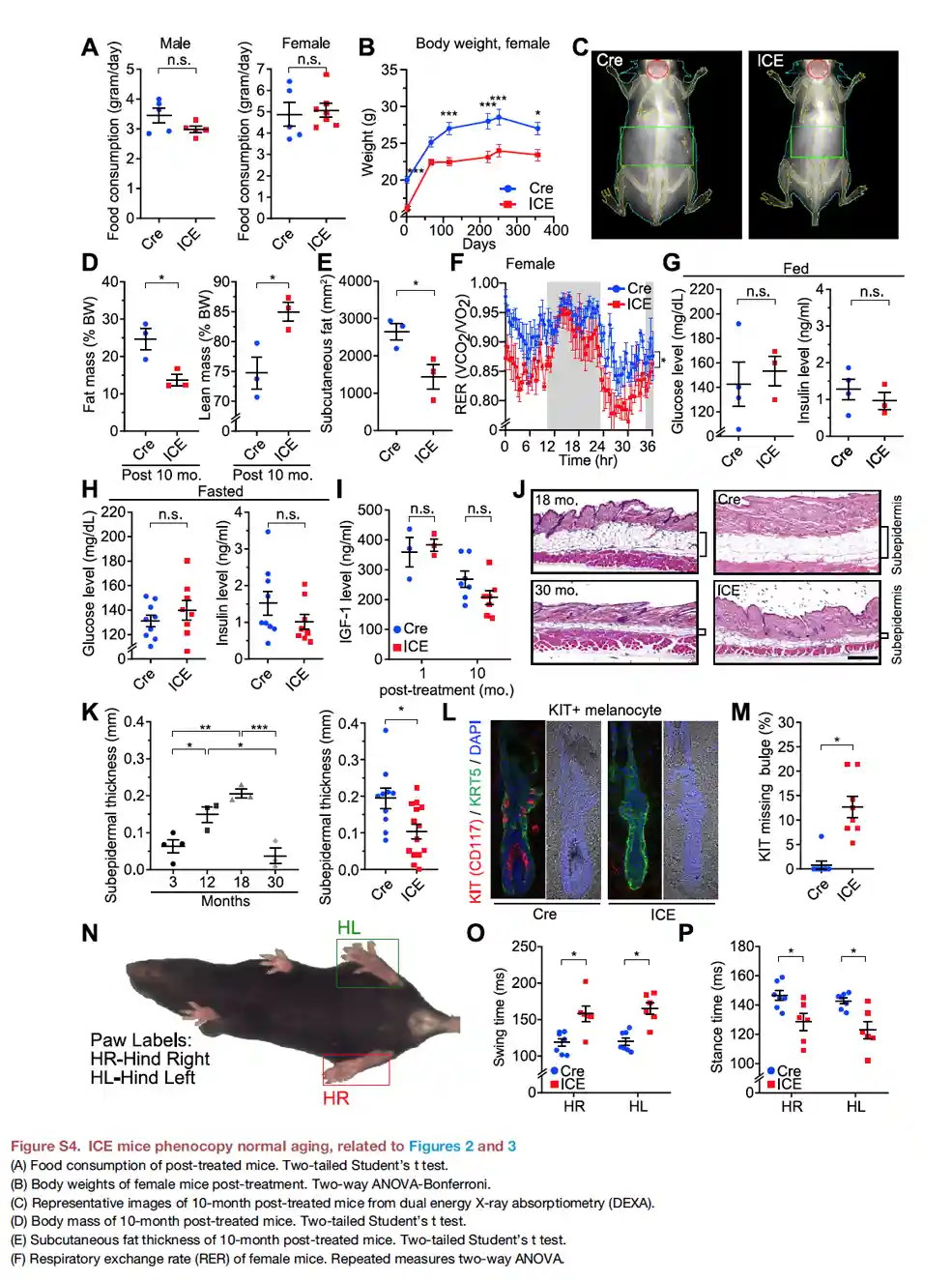
Pe 12 ianuarie 2023, a fost publicat un studiu revoluționar care schimbă modul în care gândim despre îmbătrânire. Dacă credeți că îmbătrânirea este un proces evolutiv inevitabil, iar titlul acestei pagini este un clickbait nerușinat, rezumatul acestei noi publicații vă poate schimba perspectiva.
Această publicație de pionierat este rezultatul diferitelor experimente care au fost efectuate în ultimul deceniu. Ea reprezintă o etapă majoră care schimbă modul în care oamenii de știință vor concepe studiile privind cercetarea îmbătrânirii și poate contribui, de asemenea, la dezvoltarea unei abordări uniforme pentru tratarea bolilor legate de vârstă.
Rezumat
Autorii acestei lucrări au folosit o metaforă bine concepută și sugestivă pentru a prezenta principalele concluzii ale acestei publicații relativ complexe:
- Genomul mamiferelor poate fi considerat hardware-ul nostru biologic.
- Epigenomul poate fi considerat ca software-ul nostru. Acesta nu afectează hardware-ul, ci mai degrabă modul în care ne folosim hardware-ul.
- Până în prezent, credeam că principala cauză a îmbătrânirii este o defecțiune hardware (de exemplu, deteriorarea ADN-ului).
- Rezultatele experimentelor din acest studiu sugerează contrariul. Software-ul pare să conducă procesul de îmbătrânire biologică.
- Cercetătorii au corupt software-ul șoarecilor de laborator, asigurându-se în același timp că hardware-ul acestora nu a fost afectat. A fost observat un proces accelerat de îmbătrânire. O descoperire revoluționară!
Dar este și mai bine:
- În plus, ei au folosit terapia genică pentru a readuce software-ul șoarecilor la o stare anterioară, mai tânără.
- Ei nu știu dacă acest lucru a funcționat, dar a funcționat, iar acest lucru sugerează că celulele șoarecilor păstrează o copie de rezervă a software-ului lor.
- Dacă software-ul lor este corupt din cauza proceselor naturale de îmbătrânire, le putem reda pur și simplu tinerețea folosind copia de rezervă a celulei.
În general, aceasta este o veste interesantă, deoarece repararea software-ului nostru este mult mai ușoară decât repararea sau înlocuirea hardware-ului.
Glosar
Pentru a profita la maximum de rezumatul studiului nostru de mai jos, vă recomandăm să vă familiarizați cu următorii termeni:
| Termen | Explicație |
| Epigenetică | se referă la studiul schimbărilor în activitatea genelor care nu implică modificări ale secvenței ADN de bază. Aceste modificări pot afecta modul în care genele sunt exprimate sau activate sau dezactivate în diferite celule și pot fi influențate de mediul, stilul de viață și alți factori ai unei persoane. Proprietățile epigenetice sunt ceea ce diferențiază o celulă, iar activarea sau dezactivarea diferitelor gene dintr-o celulă este, de asemenea, ceea ce diferențiază o celulă de sânge de o celulă nervoasă. |
| Repararea fidelă a ADN-ului | se referă la procesul prin care celulele repară erorile sau deteriorările moleculei de ADN pentru a menține integritatea codului genetic. Credincios înseamnă că procesul de reparare se desfășoară corect și nu va provoca mutații ale ADN-ului. |
| Mutații ADN | se referă la modificări ale secvenței ADN care pot apărea în mod natural sau ca urmare a expunerii la anumiți factori de mediu, cum ar fi radiațiile sau substanțele chimice. Unele mutații pot provoca tulburări genetice sau pot crește riscul anumitor boli. |
| Ceasul de metilare a ADN-ului | este un marker biologic care reflectă acumularea în timp a modificărilor epigenetice în ADN. Acest ceas poate fi utilizat pentru a estima vârsta unei celule, a unui țesut sau a unui organism. Este un parametru care poate fi utilizat pentru a estima vârsta noastră biologică. |
| Identitatea celulară | se referă la caracteristicile care definesc un anumit tip de celulă, cum ar fi forma, dimensiunea, funcția și modelele de expresie genică. |
| ICE (inducibil modificări ale epigenomului) | se referă la procesul prin care factorii de mediu sau alți factori pot provoca modificări ale semnelor epigenetice de pe ADN-ul unei persoane, care pot afecta expresia anumitor gene și pot duce la apariția unor boli. |
Contextul studiului
Acest studiu internațional, intitulat Pierderea de informații epigenetice ca o cauză a îmbătrânirii mamiferelor, a fost elaborat timp de 13 ani și a fost publicat în cele din urmă pe 12 ianuarie în Cell Journal. Acesta a fost redactat de o echipă internațională, inclusiv de David Sinclair, profesor de genetică la Harvard Medical School, care este renumit pentru cercetările sale inovatoare în domeniul îmbătrânirii și care suplimentează NMN cu o doză zilnică de 1 gram. Publicația detaliază numeroase experimente care au fost efectuate pentru a identifica cauzele îmbătrânirii la nivel molecular.
Ce suplimente ia Dr. Sinclair? Citiți rutina sa de longevitate
Constatări anterioare și ipoteza RCM
- Cercetătorii au asociat anterior îmbătrânirea cu ruperile de ADN dublu-catenar, care apar în aproximativ 10 până la 50 de celule pe zi.
- Cu toate acestea, în ultimul timp, s-a pus întrebarea dacă mutațiile ADN sunt de fapt principalul motor al îmbătrânirii. Mai multe descoperiri au sugerat că povestea ar putea fi mai complicată.
- S-a constatat că diferite tipuri de celule mai în vârstă au foarte puține mutații, iar unii șoareci sau oameni nu au îmbătrânit prematur.
- În plus, rezultatele studiilor pe drojdie din 1997 au indicat că pierderea de informații epigenetice, mai degrabă decât genetice, ar putea cauza îmbătrânirea.
- Ulterior, modificările epigenetice au fost corelate și cu îmbătrânirea la animale precum muștele, viermii și șobolanii cârtiță goi.
Acest lucru l-a determinat pe Dr. Sinclair și echipa sa să creeze ipoteza "RMC (Relocalizarea modificatorilor de cromatină)".
Ipoteza RCM presupune că îmbătrânirea în celulele animale este rezultatul pierderii în timp a informațiilor epigenetice și a rețelelor transcripționale. Mecanismul care stă la baza acestei evoluții a evoluat pentru a co-reglementa răspunsul nostru la daunele celulare, cum ar fi ruperile de ADN dublu catenar (DSB).
Cum testează ICE ipoteza RCM
Pentru a testa această ipoteză, cercetătorii au dezvoltat metode care le-au permis mai întâi să degradeze și apoi să reseteze informațiile epigenetice atât in vitro (în celule), cât și in vivo (la șoareci).
Cel mai important experiment a constat în crearea de întreruperi temporare în ADN-ul șoarecilor de laborator. Aceste întreruperi au fost concepute pentru a imita întreruperile minore ale cromozomilor care apar zilnic în celulele noastre și în celulele acestor șoareci, ca răspuns la expunerea la lumina soarelui, la substanțe chimice, la razele cosmice și la alți factori de mediu.
Amintiți-vă că doresc să testeze modul în care modificările epigenetice afectează îmbătrânirea, astfel încât aceste întreruperi au fost concepute doar pentru a modifica epigenomul, deci nu au fost efectuate în regiunea de codificare a ADN-ului șoarecilor pentru a preveni mutațiile genelor (de exemplu, întreruperi non-mutagenice)
Metoda nou dezvoltată pentru aceste rupturi cromozomiale intenționate a fost denumită sistemul ICE. Subiecții testelor au fost supranumiți în mod corespunzător șoareci ICE.
Așadar, dacă ipoteza RCM este corectă, aceste tăieturi mutagene ar trebui să accelereze îmbătrânirea epigenetică a șoarecilor ICE și, de asemenea, să accelereze alte caracteristici asociate vârstei în comparație cu rudele lor apropiate (grupul de control care nu a fost supus niciunei tăieturi).
Ce s-a întâmplat după ce șoarecii au suferit aceste rupturi?
La început, comportamentul lor, nivelul de activitate și consumul de alimente nu au fost diferite în comparație cu controalele negative. După ce au suferit o ruptură, factorii epigenetici și-au mutat pur și simplu atenția de la reglarea genelor la coordonarea reparațiilor în rupturile ADN. După ce ruptura a fost reparată, aceștia s-au întors la vechea lor sarcină de reglementare a genelor.
Cu toate acestea, după o lună de ICE, au început să aibă loc unele schimbări. Șoarecii ICE au dezvoltat căderea părului și au pierdut pigmenți pe nas, urechi, picioare și coadă. Aceste modificări fiziologice sunt de obicei asociate cu șoarecii de vârstă mijlocie.
După 10 luni, șoarecii ICE au pierdut, de asemenea, greutate corporală, au avut un raport de schimb respirator mai scăzut și au avut mai puțină mișcare în faza de întuneric. Toate acestea sunt caracteristici tipice care indică bătrânețea la șoareci. Descoperirile la microscop au fost în concordanță cu aceste observații: cercetătorii au observat că factorii epigenetici menționați mai sus nu au revenit la treaba lor după repararea rupturilor ADN. Acest lucru a dus la haos și disfuncționalități în cadrul epigenomului.
Deși putem fi deja siguri că șoarecii ICE au îmbătrânit, de fapt, mai repede. Cercetătorii au mers un pas mai departe și au folosit un instrument dezvoltat de laboratorul lor, care le-a permis să măsoare vârsta biologică a șoarecilor. Ceasul de metilare a ADN-ului poate fi utilizat pe celule, țesuturi sau organisme. Vârsta biologică a șoarecilor ICE a fost semnificativ mai mare comparativ cu controalele negative netratate.
Pe scurt, experimentul a arătat că rupturile ADN non-mutagenice la șoareci, care imită rupturile ADN din viața de zi cu zi:
- Accelerarea îmbătrânirii, indicată de modificări fiziologice, cum ar fi căderea părului, pierderea pigmentării, scăderea greutății corporale, scăderea mișcării în timpul fazelor întunecate și scăderea RER (raportul de schimb respirator).
- Îmbătrânirea accelerată definită de ceasul de metilare a ADN-ului care măsoară vârsta biologic și nu cronologic.
- A afectat negativ peisajul epigenetic atunci când factorii epigenetici nu au revenit la reglarea ADN-ului după ce au reglementat repararea rupturilor induse ale ADN-ului.
Aceste rezultate susțin ipotezele emise de ipoteza RCM.

Rejuvenarea șoarecilor ICE
Cu toate acestea, în acest moment, cercetătorii nu puteau fi încă siguri că mutațiile ADN nu au cauzat aceste efecte. Pentru a exclude această posibilitate, ei au trebuit să reseteze epigenomul atât în experimente in vivo, cât și in vitro.
Pentru a efectua această "terapie genică" de restabilire a epigenomului, ei au administrat trei gene cunoscute sub numele de Oct4, Sox2 și Klf4. Trioul este denumit OSK. Aceste gene sunt activate în mod normal în timpul dezvoltării embrionare și sunt prezente în mod natural în celulele stem. Ele ajută celulele mature să revină la o stare mai tânără.
Fapt amuzant: În 2020, laboratorul lui Sinclair a reușit să redea vederea șoarecilor de laborator orbi folosind aceste trei gene
Rezultatele acestei terapii genice
Țesuturile și organele șoarecilor ICE au fost readuse cu succes într-o stare anterioară asociată cu tinerețea. Nu știm încă cum reușește terapia genică bazată pe OSK să realizeze acest lucru, dar tot ce știm este că funcționează. De asemenea, știm că este necesară o copie de rezervă pentru a restaura datele. Deoarece copia de rezervă nu poate fi în interiorul genelor OSK, aceasta trebuie să fie în celulele mamifere ale șoarecilor ICE. Cu alte cuvinte: Celulele șoarecilor conțin o potențială fântână a tinereții, iar noi am găsit o modalitate de a o exploata!
Concluzii
Seturile extinse de experimente ale cercetătorului confirmă faptul că principala cauză a îmbătrânirii nu sunt modificările ADN-ului. În schimb, îmbătrânirea pare să fie alimentată de modificări ale structurii cromatinei, care este un factor epigenetic responsabil pentru formarea cromozomilor.
Pentru cercetătorii anti-îmbătrânire, aceste noi descoperiri sunt extrem de încurajatoare și interesante, deoarece manipularea moleculelor care controlează factorii epigenetici este mult mai ușoară decât inversarea mutațiilor ADN. Studiul a arătat că putem controla cu precizie vârsta șoarecilor. Putem să o accelerăm, să o încetinim sau să o inversăm după cum dorim.
Publicația a mai arătat că celulele mamifere ale șoarecilor păstrează o copie de rezervă a informațiilor lor epigenetice. Folosind trei gene cunoscute sub numele de OSK, epigenomul a fost readus la starea de tinerețe cu ajutorul acestei copii de rezervă.
Ar funcționa terapia genică ICE și OSK la om?
Șoarecii de laborator au multe asemănări cu oamenii în ceea ce privește genetica și fiziologia. Cu toate acestea, există și diferențe semnificative între cele două specii, care trebuie luate în considerare la interpretarea rezultatelor studiilor preclinice.
O diferență majoră este că șoarecii au o durată de viață mult mai scurtă decât oamenii, ceea ce poate afecta dezvoltarea și evoluția anumitor boli. În plus, dimensiunea și organizarea anumitor organe, cum ar fi creierul, pot fi diferite între cele două specii.
În ciuda acestor diferențe, multe dintre procesele celulare și moleculare care au loc la șoareci sunt prezente și la oameni, ceea ce îi face modele utile pentru studiul bolilor umane. Deoarece oamenii și șoarecii sunt foarte asemănători la nivel celular (ambele sunt celule de mamifere), este probabil ca și celulele umane să aibă copii de rezervă ale epigenomului lor.
Mergând înainte
Metoda ICE reprezintă o etapă majoră pentru cercetarea împotriva îmbătrânirii. Experimentele viitoare privind epigenomul șoarecilor vor fi probabil mai eficiente din punct de vedere al costurilor și al timpului, deoarece șoarecii ICE intră în "bătrânețe" după numai șase luni, în loc de 1,5 până la 2 ani.
Ar trebui efectuate experimente suplimentare pentru a determina modul în care terapia genică OSK induce "programul de întinerire" remarcabil observat la șoareci. Poate că pot fi identificate alte modalități mai eficiente de restabilire a backup-ului epigenetic.
Cercetătorii speră că această publicație nu numai că va inspira oamenii de știință să învețe în continuare cum să ne controlăm vârsta biologică, ci și să prevină bolile și afecțiunile asociate vârstei mature, cum ar fi diabetul de tip 2, bolile neurodegenerative și bolile cardiovasculare (ucigașul nr. 1 în majoritatea țărilor).
Un studiu uman convingător privind suplimentarea cu NMN: continuați să citiți acest studiu promițător privind NMN.

Urmăriți peste 50 de indicatori de sănătate cu acuratețe bazată pe AI. Începeți testarea gratuită astăzi și preluați controlul asupra călătoriei dvs. de wellness!

sfaturi pentru longevitate cele mai bune exerciții diete nutriționale stil de viață sănătos
Arta de a trăi bine o viață care nu se măsoară doar în ani, ci în experiențe, sănătate și bucurie!












